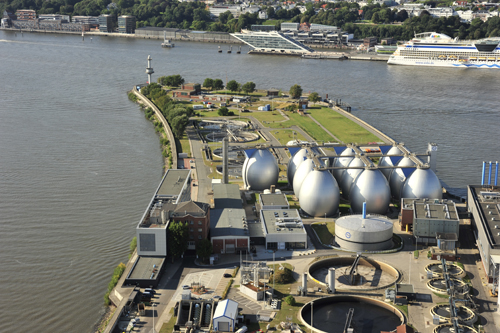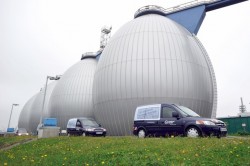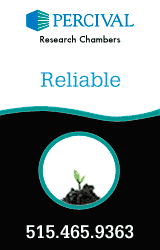The New Black: Separating wastewater & other clean energy measures
 Wastewater treatment facilities are a relatively modern practice. Granted, there were some early drainage systems invented, but they were primarily intended to carry storm and rainwater away. The Romans are even credited with building some of the first and most advanced sewers of their time, circa 800 BC. Covered by stones, wastewater was directed through a central channel (much like today’s systems) and into a river or stream.
Wastewater treatment facilities are a relatively modern practice. Granted, there were some early drainage systems invented, but they were primarily intended to carry storm and rainwater away. The Romans are even credited with building some of the first and most advanced sewers of their time, circa 800 BC. Covered by stones, wastewater was directed through a central channel (much like today’s systems) and into a river or stream.
Nevertheless, it wasn’t until later in the 19th century that many cities, which had grown considerably in size and population, realized they had to reduce the amount of pollutants in the local water and the environment.
The significance of clean water goes without saying, however, good sanitation does not go without a cost. Drinking water and wastewater plants are typically the largest energy consumers of municipal governments, accounting for 30% to 40% of the total power consumed. According to the United States Environmental Protection Agency (EPA), drinking water and wastewater systems account for approximately 3% to 4% of energy use in the US, adding over 45 million tons of greenhouse gases annually*.
Although an understanding of current energy usage and patterns are important, so is the infrastructure itself. Implementing energy efficient measures can go a long way to reducing costs and emissions. Other times, changes to a plant’s design or structure might make the most long-term impact from an economic and energy-wise standpoint.
A Contemporary Divide: Hamburg’s solution
Providing reliable wastewater services and safe drinking water is an extremely energy"intensive process—a challenge that doesn’t only affect the United States. From irrigation fields to underground sewer pipes, the development of wastewater treatment in Germany was a steady process and a noteworthy one.
Even before the first World War, artificial biological treatment with filters were introduced, followed be sludge digesters. In 1843, the port city of Hamburg made headlines when it began collecting and transporting wastewater through an impressive network of pipes to a centralized location for purification.
Diseases such as cholera, which once spread rapidly through contaminated water, were suddenly in the past.
Sounds contemporary, however, time has exposed a concern that Hamburg is currently in the process of mitigating: mixed water. Wastewater from toilets (labeled “schwarzwasser,” or black water) has been mixing with all other domestic wastewater, say from the shower, sink, dishwasher, or washing machine (i.e. grey water).
“We mix in our sewers…relatively dirty wastewater with not so heavily loaded water,” explained Maika Hartman, a project engineer at Hamburg WASSER, the city’s water management facility. “This is anything but contemporary.”
Hartman pointed out that trash has been sorted out for decades, separated by paper, plastics, glass, and organics. So, why should wastewater be any different?
A solution has been in the works that addresses the issue of merging water flows. The result: HAMBURG WATER Cycle (HWC), an innovative approach that separates the material streams of wastewater. In a conventional set-up, domestic wastewater streams are combined and discharged together into the sewer system. HWC divides this flow, so the black water is separated from the grey water. Even rainwater is collected and treated separately.
HWC not only increases drainage capacity, but the system also increases water utilization. For example, the high concentration of organic substances in black water makes it ideal for the production of biogas through fermentation. With the addition of other sources of biomass to the black water, energy can also be generated in the form of heat and electricity—a markedly different approach to traditional systems, whereby energy is primarily just consumed and/or wasted.
HWC provides a method by which wastewater treatment plants can now not only save, but also potentially produce power. The technology will be implemented for the first time on a large-scale in Hamburg-Jenfeld. A residential area of approximately 35 acres, the Jenfelder Au project will be home for approximately 2,000 new residents once complete**.
The city of Hamburg hopes to serve as the model, but ideally the intent is for the HAMBURG WATER Cycle to be adapted and implemented elsewhere—in fact, anywhere worldwide where a more efficient use of resources are required, with the added potential to generate biogas, heat, or electricity.
Leading by Example: Energy conservation
 Even with the promise of HWC, biogas is nothing new to Hamburg’s sewage and wastewater plant. In 2012, they powered Germany’s first and largest corporate vehicle fleet by means of the biogas created from the sewage treatment process (their slogan: “Your wastewater is what drives us”—120 company cars are regularly fueled by the plant). Sludge from the sewage results in a gas mixture of methane and CO2. Part of it is processed into environmentally friendly biogas, which today also continues to be fed into the public grid as biogas.
Even with the promise of HWC, biogas is nothing new to Hamburg’s sewage and wastewater plant. In 2012, they powered Germany’s first and largest corporate vehicle fleet by means of the biogas created from the sewage treatment process (their slogan: “Your wastewater is what drives us”—120 company cars are regularly fueled by the plant). Sludge from the sewage results in a gas mixture of methane and CO2. Part of it is processed into environmentally friendly biogas, which today also continues to be fed into the public grid as biogas.
Increasingly, wastewater utilities are realizing that they can be a generator of energy, and not just a consumer. In the United States, the EPA promotes combined heat and power (CHP), or co-generation, as a cost-effective option for wastewater treatment facilities. With the installation of an anaerobic digester, biogas can be used in a CHP system as fuel to generate electricity and power at a plant.
It’s estimated that approximately 12,000 US wastewater treatment plants now flare some or all of the biogas generated from anaerobic digestion. (The EPA offers a voluntary CHP Partnership Program to help energy stakeholders and plant owners facilitate the development of such a project; visit: www.epa.gov/chp/markets/wastewater.html)
The search for innovative, energy-saving solutions is global and ongoing. Perhaps, most unique and interesting to date is the research being done by collaborating Arizona universities (at the Arizona Center for Algae Technology—AzCATI), with the help of an EPA grant, to grow algae using wastewater. Herein, the process also starts with anaerobic digestion, with the algae eventually growing and working to clean phosphorous, ammonia, and nitrates from wastewaters. With further processing, algae can then be harvested to create feed and food products. It can also create biogas.
According to a short film by Arizona State University (check out the video at www.ourprg.com), AzCATI’s co-director Milton Sommerfeld, PhD, explained: “The advantages of using wastewater is the fact that you are using nutrients that would otherwise be disposed of. In this case, you have the algae use those nutrients, which will develop more biomass and ultimately biofuels.”
Technology has certainly come a long way from the early Roman days of manmade, stone sewers to today’s energy-intensive and, now in some cases, energy-saving wastewater treatment plants. Whether it’s creating biogas from black wastewater or from algae, it will be interesting to see what the future brings in the US and globally.
* Source: http://water.epa.gov/infrastructure/sustain/energyefficiency.cfm
**Read more at: www.hamburgwatercycle.de/index.php/the-jenfelder-au-quarter.html
Hamburg WASSER
www.hamburgwasser.de
HAMBURG WATER Cycle
www.hamburgwatercycle.de
Author: Michelle Froese
Volume: November/December 2014











